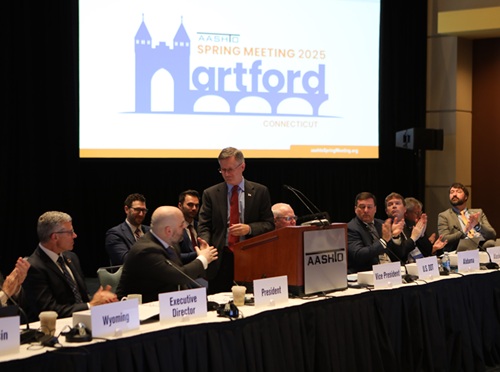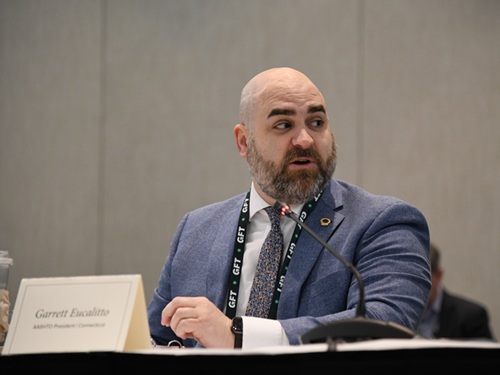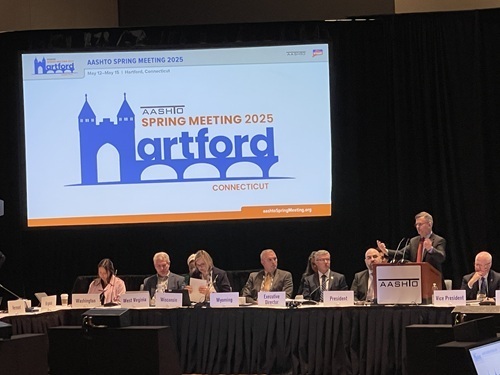The U.S. Department of Transportation and Connecticut Department of Transportation recently introduced what is touted to be a “first-of-its-kind” programmatic agreement establishing a unified federal review process and delegating authority to the state to accelerate the review of individual transportation projects that may affect historic properties under Section 106 of the National Historic Preservation Act.
[Above photo by AASHTO]
Section 106 requires federal agencies to identify and assess the effects of a project on historic properties. In practice, that means Connecticut DOT archaeologists and architectural historians carry out this work on behalf of the federal agencies and in conjunction with the Connecticut State Historic Preservation Office or SHPO, Native American tribes, consulting parties, and the public.

Formally unveiled by Steven Bradbury, USDOT deputy secretary, on May 15 at the American Association of State Highway and Transportation Officials 2025 Spring Meeting in Hartford, CT, the agency said it “believes this new type of streamlined agreement could cut six weeks or more off from the schedules of at least 90 infrastructure projects in Connecticut per year.”
That project list includes construction of the Gold Star Memorial Bridge between New London and Groton, a new Bus Rapid Transit system in New Haven, and Metro-North Railroad customer service improvements along the New Haven Line.
“This agreement is a great example of the commonsense approach we are taking at USDOT to remove unnecessary burdens, empower states, and deliver a safe and efficient world class transportation system that Americans deserve,” Bradbury said in a statement. “We hope more states are interested in entering this more efficient agreement to streamline the regulatory process.”

Garrett Eucalitto – Connecticut DOT commissioner and AASHTO’s 2024-2025 president – added that this agreement results from “productive collaborations” between his agency, USDOT, as well as other federal and state partners, such as: the Federal Highway Administration, Federal Transit Administration and Federal Railroad Administration, SHPO, and the Advisory Council on Historic Preservation.
“By streamlining environmental reviews and cutting government red tape, we can more efficiently advance projects and ultimately reduce costs,” Eucalitto said.
Many state departments of transportation across the country are involved in similar programmatic agreements and are also engaged in a variety of historical preservation efforts tied to transportation projects.
For example, in March 2024, the Georgia Department of Transportation and the Georgia Department of Natural Resources (GDNR) signed a historic Bat Conservation Funding Programmatic Agreement that will transfer conservation funding from Georgia DOT to GDNR so as to maximize bat conservation areas while minimizing impacts to transportation project timelines.
The Bat Conservation Funding Programmatic Agreement will work in conjunction with a Programmatic Consultation Agreement developed in partnership with Georgia DOT, U.S. Fish & Wildlife Service, the Federal Highway Administration, GDNR, and the U.S. Army Corps of Engineers to streamline Section 7 consultation for transportation projects under the Endangered Species Act.
Those two agreements together form a first of its kind approach to protect endangered bats, creating predictability to the timeline of completing environmental documentation on transportation projects, the Georgia DOT said at the time.
 Top Stories
Top Stories
Modal Administrators Speak at AASHTO Annual Meeting
December 5, 2025 Top Stories
Top Stories

